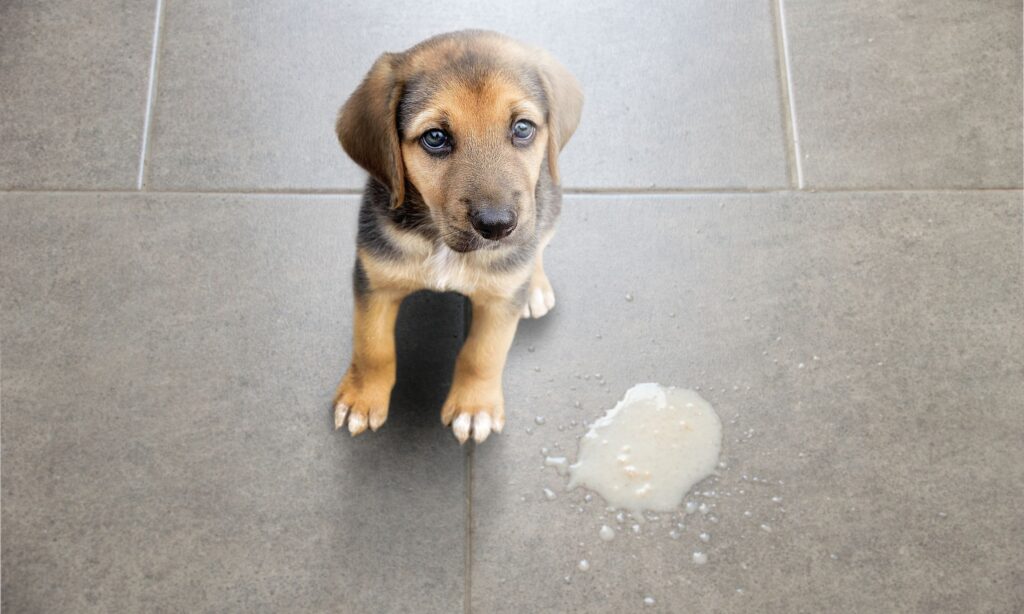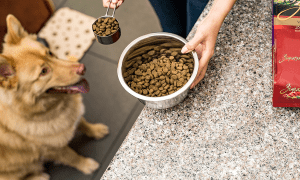“This post contains affiliate links, and I will be compensated if you make a purchase after clicking on my links.”

Dogs occasionally vomit to get rid of the food or other substances they shouldn’t have eaten. This kind of one-time vomiting is frequently not a cause for alarm.
But there are many other, often serious, reasons why dogs could vomit. As a pet owner, knowing the reasons why is important for your dog’s health. Here are some tips for understanding when vomiting will occur and what to do when it happens.
Stomach or intestine ulcers are the most common reasons for bleeding in the gastrointestinal tract. Signs of a stomach ulcer in dogs include low appetite, anemia, drooling, and fever. In addition, your dog may have recently had trauma or stomach cancer. The color of your dog’s vomit can change depending on the cause, just like it does in humans. Some of them might not come as a surprise to you, while others might. Here’s what you need to know about it:
Green Vomit
Green vomit is rarely a concern if it is an occasional thing. If your dog eats grass, leaves, or other plant material that upsets the stomach, green vomit could be the result. It might also be because they are simply throwing up bile. Even so, whether or not your dog is snacking on grass, it is always worth it to take them to the doctor if they show signs of lethargy, diarrhea, or weight loss. Additionally, if your dog eats unidentified plant material and begins to vomit, call your veterinarian right away because some plants are toxic to dogs.
Yellow Vomit
If it is an isolated incident, yellow vomit is typically nothing to worry about. It will typically contain more bile than green vomit, although in a smaller amount. Don’t be overly concerned unless the symptoms continue. If so, speak with your veterinarian.
Black Vomit
Black vomit is rare. Usually, black vomit is a sign that your dog accidentally swallowed mud or soil while they were playing. Look at the vomit and inspect if it resembles coffee grounds; if it’s a very, very dark red, this could indicate a stomach ulcer or an undigested poison.
Red Vomit
Typically, red vomit indicates that your dog is vomiting blood. This could mean problems with the stomach lining or possible inflammation. Vomiting blood could also be a reaction to a toxin. If it’s dark red, the blood has probably been present in your dog’s system for a while, and this can be an ulcer’s warning indication. Contact your veterinarian straight away if your dog is frequently or continuously vomiting blood.
White Vomit
In many cases, your dog may appear to be coughing up white foam when they are actually producing white vomit. Your dog is probably experiencing bloat or digestive issues if the foam is white. They might be trying to vomit in these situations, but aren’t having much success. This qualifies as an emergency and requires prompt veterinary care. Contact your veterinarian as soon as possible if your dog is coughing up white foam.
Dark Brown Vomit
If a dog eats food that is brown, such as chocolate or poop, they may vomit something dark brown. Your dog may have indulged in coprophagia if the vomit has a distinct smell. While this is not immediately concerning, it should be discouraged because coprophagia can expose humans to deadly parasites and bacteria from dog licks.
Vomiting could be a minor problem, such as a stomach ache, or it could be a serious emergency. Take your dog to the vet right away if you have any concerns about them vomiting.





















